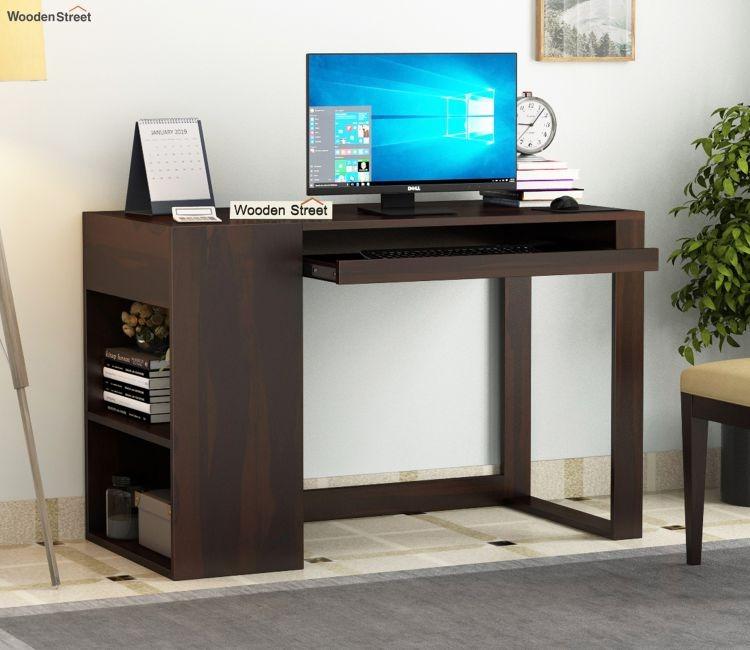Standing Study Tables: Are They the Future of Student Productivity?

As students adapt to more dynamic learning environments and digital education takes center stage, traditional furniture is being reimagined to support better focus, health, and productivity. Among the latest trends making waves is the standing study table—a modern alternative to the conventional desk that promises enhanced energy, posture correction, and even improved academic performance. But do these benefits really hold up? And are standing study tables just a passing trend, or the future of student productivity?
Let’s explore the concept in depth.
What is a Standing Study Table?
A standing study table is designed to allow students to work while standing up, rather than sitting. Unlike regular desks, these tables are typically taller and are often adjustable in height. Some versions are manually operated, while others use electric motors to shift between sitting and standing positions. The main goal is to reduce the number of sedentary hours a student spends at a desk, encouraging movement and an active posture throughout the day.
The Rise of the Standing Desk in Education
With increased screen time and sedentary routines, students often suffer from issues like poor posture, back pain, and reduced concentration. Recent studies on ergonomics and productivity have encouraged institutions and parents to look for innovative solutions—leading to the growing popularity of the standing study table for students.
In many schools across Europe and the US, standing desks have already been integrated into classrooms. At home, parents are increasingly opting for height-adjustable study table designs to create healthier learning environments for their children.
Benefits of Standing Study Tables for Students
1. Improved Posture and Physical Health
Traditional sitting arrangements, especially when used for long periods, can cause slouching, spinal issues, and muscle fatigue. A standing study table naturally promotes a straight posture, reducing the risk of developing chronic back pain and posture-related concerns.
2. Increased Focus and Productivity
Standing while studying may sound tiring, but research suggests that alternating between sitting and standing keeps the brain alert and minimizes distractions. The ability to move freely while studying can increase blood flow, helping students stay more engaged and mentally active.
3. Helps Combat Sedentary Lifestyles
In the age of online classes, gaming, and social media, students spend an alarming amount of time seated. A study table for students that allows for standing helps break this cycle and promotes physical activity even during study sessions.
4. Encourages Better Study Habits
Standing study tables create a more purposeful and intentional study environment. Students are less likely to lounge or get lazy when they’re on their feet, encouraging a more disciplined approach to their study routine.
Standing Study Table Design: What to Look For
Choosing the right study table design is essential for maximizing the benefits. Here are a few features to consider:
1. Adjustable Height
An ideal standing study table should allow height adjustments. This ensures that students of all ages and heights can use it comfortably and transition between sitting and standing positions as needed.
2. Sturdy Build Quality
Whether made from engineered wood, metal, or a combination of both, the table must be stable enough to support books, laptops, and stationery without wobbling.
3. Ergonomic Design
Rounded corners, smooth edges, and an appropriate desktop depth are crucial. A well-designed study table for students should offer enough surface area for spreading out books and writing comfortably.
4. Storage Features
Built-in shelves or drawers make a standing study table even more functional. They allow students to keep their essentials organized, enhancing the efficiency of the study space.
Who Should Use a Standing Study Table?
While standing tables can benefit nearly all students, they are particularly useful for:
-
Teenagers and college students who study for long hours
-
Kids attending online classes who need to move around more
-
Students with back issues or posture-related problems
-
Creative learners who find movement helps with focus and memory
However, it's essential to use a standing study table the right way—standing all day isn’t advisable either. Alternating between sitting and standing is key for a balanced study routine.
Setting Up a Productive Study Zone
The success of a study table—standing or otherwise—depends on how well the overall workspace is designed. Here's how to enhance productivity using a standing table setup:
1. Use an Anti-Fatigue Mat
Standing for extended periods can lead to discomfort in the legs. An anti-fatigue mat offers cushioning and encourages subtle movements that reduce muscle strain.
2. Keep the Monitor at Eye Level
If using a laptop or desktop, ensure the screen is positioned so the top of the monitor is at eye level. This reduces neck strain and enhances posture.
3. Organize Supplies Within Reach
The study table should be clutter-free. Use organizers, trays, and magnetic boards to keep essentials accessible but neat.
4. Adjust Lighting
Good lighting—natural or artificial—enhances focus. A desk lamp with adjustable brightness is a great addition to any study table for students.
Standing Study Tables vs. Traditional Study Tables
| Feature | Standing Study Table | Traditional Study Table |
|---|---|---|
| Posture | Promotes upright posture | Encourages slouching if not ergonomic |
| Movement | Encourages active learning | Sedentary |
| Focus | Helps reduce fatigue and distraction | May cause drowsiness after long hours |
| Health | Reduces risk of back and neck pain | Can lead to posture-related issues |
| Price | Generally more expensive | Widely available in budget-friendly options |
While both types of study tables have their merits, the standing version stands out for those looking to prioritize health and long-term comfort.
Are Standing Study Tables Worth It?
Absolutely—when used correctly.
A standing study table is more than a furniture trend; it's a lifestyle change that encourages movement, better posture, and enhanced productivity. For students navigating online education, long study hours, or even competitive exams, this shift can be a game-changer.
However, it’s important to balance standing with sitting and to ensure the setup is ergonomic and comfortable. When paired with a good chair and accessories, a standing study table for students becomes an investment in both health and academic performance.
Final Thoughts
As education evolves, so must our approach to study environments. The traditional study desk served us well for decades, but the modern student needs more—from posture-friendly designs to adaptable furniture. The standing study table rises to meet these needs, offering a promising future for student well-being and productivity.
Whether you're redesigning your child’s study room or upgrading your own space, this innovation is well worth considering. With a wide range of study table designs available online, it’s easier than ever to find a standing table that supports both learning and health.








